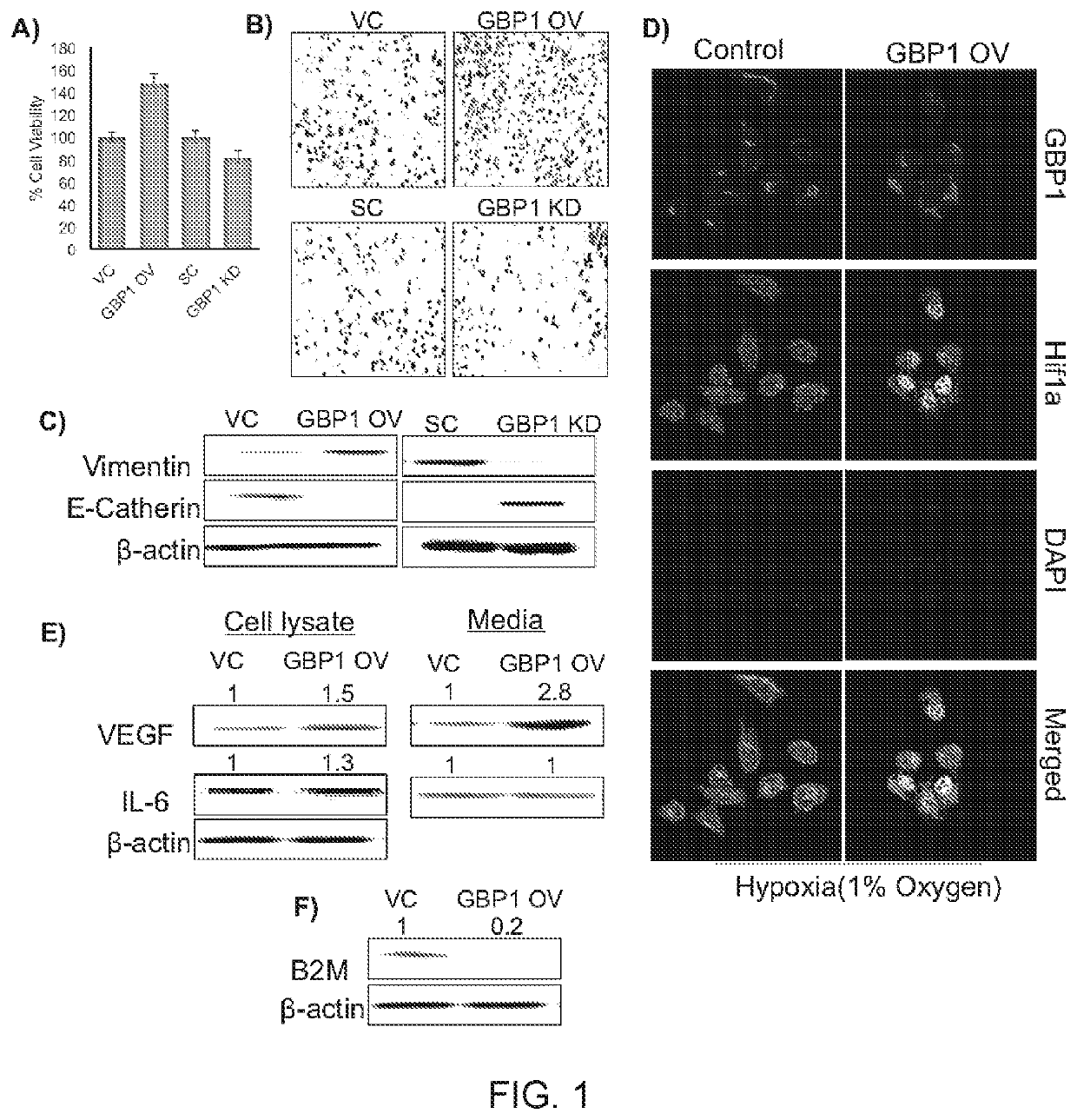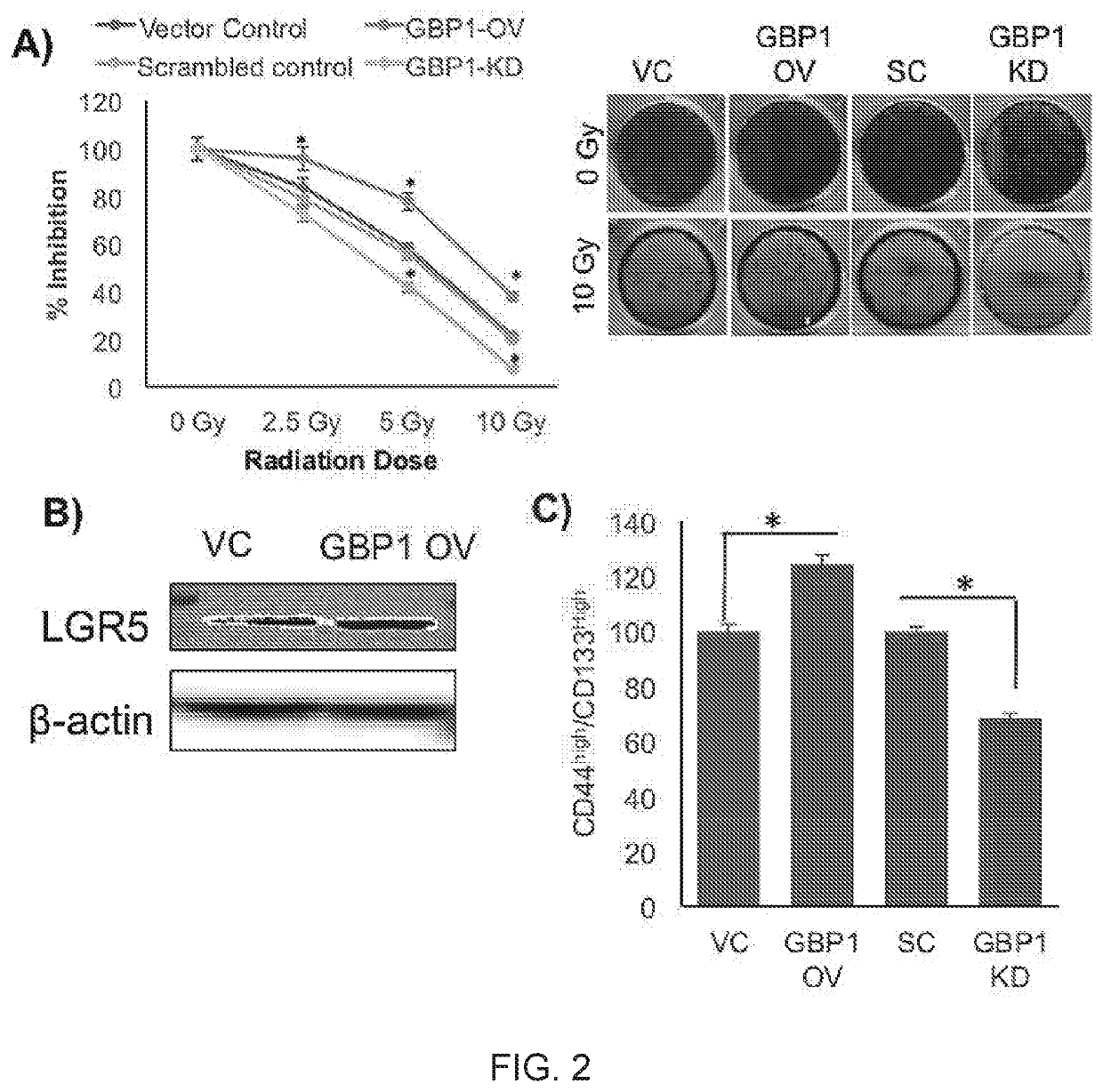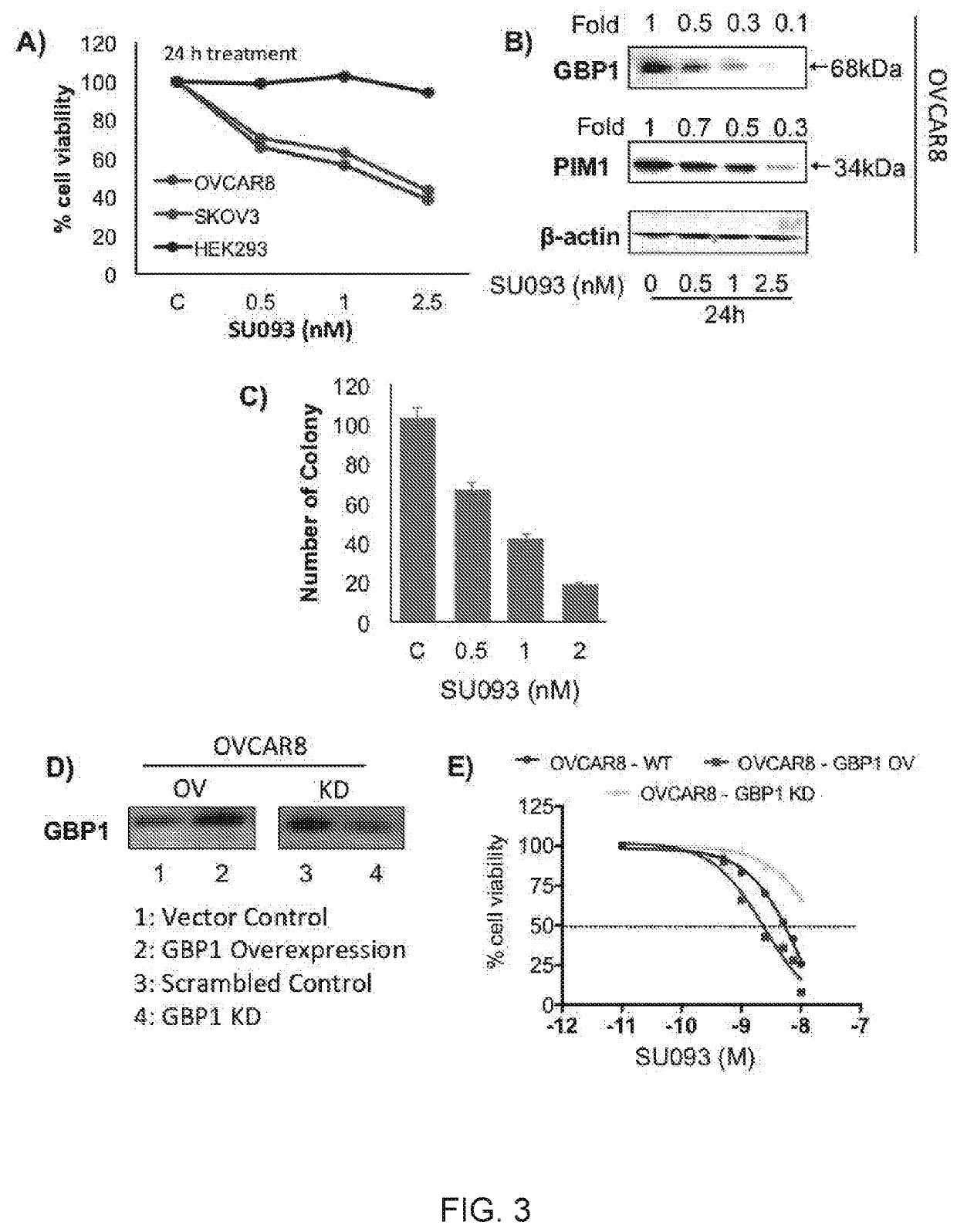Novel n-hydroxyethyl didehydroazapodophyllotoxins as gbp1 inhibitors and methods of overcoming treatment resistance in cancer
a technology of azapodophyllotoxins and gbp1 inhibitors, which is applied in the field of new n-hydroxyethyl didehydroazapodophyllotoxins as gbp1 inhibitors, can solve the problems of unaddressed clinical needs, affecting patient quality of life, and limited mechanistic insight of the relationship between gbp1 and radioresistance, so as to reduce radiation damage to the subject
- Summary
- Abstract
- Description
- Claims
- Application Information
AI Technical Summary
Benefits of technology
Problems solved by technology
Method used
Image
Examples
example 1
Synthesis
[0376]
[0377]Amino alcohol substrates (i.e. which become Ring B of the subject compounds) were obtained by reacting corresponding commercially available aryl amines with chloroethylchloroformate, followed by reaction with potassium hydroxide in ethanol.
[0378]The amino alcohol substrates (e.g. as obtained from the reaction depicted in Scheme A above) were reacted with the corresponding commercially available benzaldehydes and tetronic acid using ethanol as a solvent to afford exemplary GBP1 inhibitor compounds of formulae (II)-(III) as described herein.
[0379]The amino alcohol substrates (e.g. as obtained from the reaction depicted in Scheme A above) were reacted with the corresponding commercially available benzaldehydes and corresponding 1,3-dione (e.g. 5,5-dimethylcyclohexane-1,3-dione or cyclohexane-1,3-dione) using ethanol as a solvent to afford exemplary GBP1 inhibitor compounds of formulae (IV)-(V) as described herein.
General Procedure for Synthesis of Exemplary GBP1 In...
example 2
Testing
[0381]Selected compounds as described herein and other derivatives were prepared and tested for activity in a variety of assays.
Compound Activity
[0382]Exemplary compounds (1)-(17) and previously identified compound SU093 (Andreoli, M., Persico, M.; Kumar, A.; Orteca, N.; Kumar, V.; Pepe, A.; Mahalingam, S.; Alegria, A. E.; Petrella, L.; Sevciunaite, L.; Camperchioli, A.; Mariani, M.; Di Dato, A.; Novellino, E.; Scambia, G., Malhotra, S. V.; Ferlini, C.; Fattorusso, C., Identification of the First Inhibitor of the GBP1:PIM1 Interaction. Implications for the Development of a New Class of Anticancer Agents against Paclitaxel Resistant Cancer Cells. Journal of Medicinal Chemistry 2014, 57 (19), 7916-7932) were tested for GBP1 inhibition using a cell-based reporter assay in ovarian cancer cell line OVCAR-8 stably transfected with GBP-1-luciferase. Tables 1 and 2 below outlines the percentage of GBP1 expression in OVCAR-8 cells for each of the 17 compounds tested. Screening studies...
example 3
ein Studies
GBP1 has Modulatory Role in HNC Tumor Microenvironment (TME):
[0384]To evaluate the effect of GBP1 expression of cell viability, GBP1 overexpressed (OV) and knockdown (KD) SCC-90 cell lines were constructed, which was an HPV-positive HNC cell line, using lentiviral transfection. Cell viability experiments performed on these cell lines using MTT assay showed that, GBP1-OV cells were more proliferative then GBP1-KD (FIG. 1, panel A). Similar results were obtained in FaDu cell line, an HPV-negative HNC cell line, which suggested that that role of GBP1 is HPV independent.
[0385]GBP1 overexpression increased cell migration properties in SCC-90 in normal as well as hypoxic conditions as shown by Boyden chambers assay (FIG. 1, panel B). Immunostaining experiments showed that GBP1-OV cells induced the expression of epithelial-to-mesenchymal transition (EMT) marker Vimentin, while GBP1-KD cells induced the expression of mesenchymal-to-epithelial transition (MET) marker E-cadherin in...
PUM
| Property | Measurement | Unit |
|---|---|---|
| shrinkage | aaaaa | aaaaa |
| shrinkage | aaaaa | aaaaa |
| shrinkage | aaaaa | aaaaa |
Abstract
Description
Claims
Application Information
 Login to View More
Login to View More - R&D
- Intellectual Property
- Life Sciences
- Materials
- Tech Scout
- Unparalleled Data Quality
- Higher Quality Content
- 60% Fewer Hallucinations
Browse by: Latest US Patents, China's latest patents, Technical Efficacy Thesaurus, Application Domain, Technology Topic, Popular Technical Reports.
© 2025 PatSnap. All rights reserved.Legal|Privacy policy|Modern Slavery Act Transparency Statement|Sitemap|About US| Contact US: help@patsnap.com



